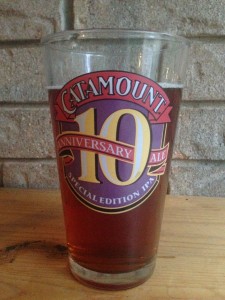
A diagram of the temperature ramp the steeped grains (really a small mash) undergo. This should make for a more clove-y beer.
Here’s another surefire extract recipe — a roggenbier. Roggenbiers are like dunkelweizens, but made with rye instead of wheat. The distinctive “pumpernickel” flavor of rye blended with the banana and clove aroma of a hefeweizen make this a flavorful and interesting beer. The “spicy” notes of Tettnang hops round out the aroma.
This recipe adds one twist on the usual extract brewing method — a temperature ramp from 109 °f (43 °C) through 150 °F (66 °C) for the steeped grains. (Really, it’s a small mash, so follow the temperatures and liquid amounts as closely as possible.) The initial low temperature helps accentuate the clove character in the beer. For a explanation of this, see our series on brewing hefeweizens. (This step can be omitted, if you’d like to simplify the brewing; you’ll just end up with a more banana-focused roggenbier.)
The brew-in-a-bag-like (BIAB-like) grain steeping allows you to use a lot of rye malt, but not have to worry about lautering, as an all-grain brewer would. (See James’ 100% Rye Pale Ale for more on the difficulties of brewing all-grain beer with high percentages of rye. While you’re at it, see Denny Conn’s take on brewing with rye and his Rye IPA recipe.)
You’ll either need to make a small (1-qt./1-L) yeast starter, or add some neutral dried ale yeast to boost your pitching rate, to best brew this beer. Hopefully these two little twists don’t make brewing this beer Rube Goldbergian, because this beer is flavorful and fun to brew.
Rube’s Ramped Roggenbier
Roggenbier
Malt extract: English units
DESCRIPTION
A copper/amber ale with the “snap” of rye and banana/clove aroma of a hefeweizen.


Recent Comments